
On 2 Sep 1814 Ernst Curtius was born, the German archaeologist and historian who directed the excavation of Olympia (1875-81), the most opulent and sacred religious shrine of ancient Greece and site of the original Olympic Games (from 776 B.C. to 393 A.D.).
When Curtius died in 1896, Robert F. Keep wrote in The Nation his reminiscences about the archaeolgist. Among the biographical notes, perhaps the most interesting is the chain of events whereby Curtius became the Educator of the Crown Prince, and how that relationship with the Royal Family instigated support for the German excavations in 1876-80. The remainder of the article on Ernst Curtius concentrates on the personal side of his life, but still makes an interesting read to think of the human side of an archaeologist rather than a catalog of his discoveries.

On 2 Sep 1877, Frederick Soddy was born, who coined the word “isotopes” to refer to the seperate species of atoms of a given element that shared all the same chemical properties, yet had a different atomic mass. It was an outcome of his investigation of the different transformations of radioactive substances for which he received the Nobel Prize for Chemistry in 1921. Although the word he created is used extensively in science today, his own name remains obscure. To amend that... Today's book pick is: The World Made New: Frederick Soddy, Science, Politics, and Environment, by Linda Merricks who outlines the research of this most original and widely significant, yet largely forgotten British scientist. Soddy was one of the first generation of English atomic scientists, working with Ernest Rutherford on the initial discoveries about atomic disintegration. His concern with the potentially disasterous combination of politics and the abusive use of atomic energy led Soddy to his abandon scientific research. He should also be recognized as a pioneer in the field of energy conservation and environmental ethics. This book provides a fascinating read of one of the first proponents of scientific responsibility.
It is available from Amazon, typically about New from $130.00. Used from $28.00. (As of earlier time of writing - subject to change.)
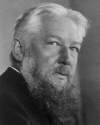 | At my urgent request the Curie laboratory, in which radium was discovered a short time ago, was shown to me. The Curies themselves were away travelling. It was a cross between a stable and a potato-cellar, and, if I had not seen the worktable with the chemical apparatus, I would have thought it a practical joke. Wilhelm Ostwald on seeing the Curie's laboratory facilities. |
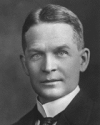 | The power of man to do work—one man-power—is, in its purely physical sense, now an insignificant accomplishment, and could only again justify his existence if other sources of power failed. … Curious persons in cloisteral seclusion are experimenting with new sources of energy, which, if ever harnessed, would make coal and oil as useless as oars and sails. If they fail in their quest, or are too late, so that coal and oil, everywhere sought for, are no longer found, and the only hope of men lay in their time-honoured traps to catch the sunlight, who doubts that galley-slaves and helots would reappear in the world once more? |
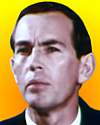 | It is infinitely better to transplant a heart than to bury it to be devoured by worms. |
| Before you look at today's web page, see if you can answer some of these questions about the events that happened on this day. Some of the names are very familiar. Others will likely stump you. Tickle your curiosity with these questions, then check your answers on today's web page. | |
| Births | |
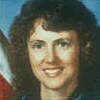 | Christa McAuliffe, born 2 Sep 1948, was a civilian astronaut on the 10th launch of the Challenger Space Shuttle, which exploded in midair, killing its crew of seven. What was her career? |
 | Frederick Soddy, born 2 Sep 1877, was an English chemist and physicist who received the Nobel Prize for Chemistry in 1921 for investigating radioactive substances. He coined the name now used for different species of atoms of the same element having a different atomic mass. What now ubiquitous name did Soddy provide for different species of atoms of the same element? What is the meaning of the Greek words he combined? To what do they refer? |
| Deaths | |
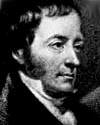 | William Henry (1775-1836) was an English physician and chemist, who proposed (1803) what is now called Henry's law, which refers to “The amount of a gas absorbed by a liquid is in proportion...” Can you complete this statement of Henry's Law? |
| Events | |
 | On 2 Sep 1985, it was announced that a U.S. and French expedition had located the wreckage of a sunken ship about 560 miles off Newfoundland, 73 years after the British luxury liner sank. What is the name of this vessel? |
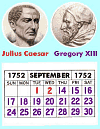 | The last day of the Julian calendar in Great Britain and the British colonies was 2 Sep 1752. The Gregorian Calendar designed to correct the extra leap year day problem went into effect the next day with tomorrow being numbered after dropping several days to realign the calendar. On the new calendar, what date followed 2 Sep 1752 on the old calendar? |
Fast answers for the previous newsletter for September 1: pernicious anemia • device that separates atoms or molecular fragments of different mass and measures those masses • pneumatic tube • subatomic particles having extremely short lifetimes and occurring only in high-energy nuclear collisions • passenger pigeon.
 If you enjoy this newsletter, the website, or wish to offer encouragement or ideas, please send feedback by using your mail reader Reply button.
If you enjoy this newsletter, the website, or wish to offer encouragement or ideas, please send feedback by using your mail reader Reply button. Your click on a Facebook, StumbleUpon, or other social button on the site webpages is also a welcome sign of appreciation. Thank you for using them.
© This newsletter is copyright 2020 by todayinsci.com. Please respect the Webmaster's wishes and do not put copies online of the Newsletter — or any Today in Science History webpage. (If you already have done so, please remove them. Thank you.) Offline use in education is encouraged such as a printout on a bulletin board, or projected for classroom viewing. Online, descriptive links to our pages are welcomed, as these will provide a reader with the most recent revisions, additions and/or corrections of a webpage. For any other copyright questions, please contact the Webmaster by using your mail reader Reply button.
--
If you do not want to receive any more newsletters, Unsubscribe
To update your preferences and to unsubscribe visit this link
Executive Real Estate Business Class
-
"It was like a man with wings. It wasn't like anything you'd see on TV or in a monster movie." ...
About the publisher
Search This Blog
Blog Archive
-
▼
2020
(1542)
-
▼
September
(173)
- SCIENCE: Just how big is Everest?
- The Latest News from History News Network
- On This Day for September 30 - Munich Agreement si...
- We are called to return to our foundational values...
- Newsletter for Wednesday 30 September.
- They Killed His Wife And Left Him For Dead – Then ...
- TRAVEL: Telling new truths about America’s histori...
- Make learning fun with Nat Geo Kids magazine! Subs...
- On This Day for September 29 - British mandate in ...
- Newsletter for Tuesday 29 September.
- Special Edition: Dinosaurs come to life like never...
- September 29: On This Day in History
- HISTORY: America's most endangered historic sites
- New This Week on History News Network
- On This Day for September 28 - California “discove...
- Newsletter for Monday 28 September.
- September 28: On This Day in History
- FAMILY: What do I tell my kids about wildfires and...
- On This Day for September 27 - Norman Conquest beg...
- Newsletter for Sunday 27 September.
- September 27: The Rosetta Stone, E=mc² and Fear as...
- The Compass: Indonesia
- On This Day for September 26 - First televised U.S...
- Newsletter for Saturday 26 September.
- September 26: Frances Drake's Circumnavigation, th...
- CORONAVIRUS UPDATE: Is this the end of the office?
- PHOTOGRAPHY: They feed us. Now we see them.
- The assassination of Lord Mountbatten | Enola Holm...
- 39,500-Year-Old Cave Bear Discovered Perfectly Pre...
- On This Day for September 25 - Pacific Ocean sight...
- The Roundup Top Ten for September 25, 2020
- Newsletter for Friday 25 September.
- September 25: Battle of Stamford Bridge, Remote Co...
- ANIMALS: These mighty elephants find peace
- On This Day for September 24 - Federal troops sent...
- Newsletter for Thursday 24 September.
- Global cartels taking control of the world + HPA B...
- September 24: Decline of the Byzantine Empire, Ope...
- YOUR WEEKLY ESCAPE: America's oldest mystery
- SCIENCE: How to cope with a big death toll
- The Latest News from History News Network
- On This Day for September 23 - Neptune observed, J...
- Newsletter for Wednesday 23 September.
- September 23: Nintendo, the Start of Data Processi...
- TRAVEL: How will America’s state parks survive?
- Matching gift opportunity for Sumatran rhinos
- On This Day for September 22 - Solidarity formed, ...
- Newsletter for Tuesday 22 September.
- September 22: Salem Witch Trials, Iraq's Invasion ...
- HISTORY: Who can replace RBG?
- Feed their curiosity! Get Nat Geo Kids magazine fo...
- New This Week on History News Network
- On This Day for September 21 - Joseph Smith's visi...
- Newsletter for Monday 21 September.
- September 21: France, China and a Sheep Shearing R...
- FAMILY: Don’t tell your kids outdated stuff about ...
- On This Day for September 20 - Rome incorporated i...
- Pro-life is not Politics + Vickie Travis's message...
- Newsletter for Sunday 20 September.
- September 20: Attila the Hun, Magellan's Circumnav...
- The Compass: Chile
- Matching gift opportunity for Sumatran rhinos
- On This Day for September 19 - George Washington's...
- Newsletter for Saturday 19 September.
- CORONAVIRUS UPDATE: Young people are spreading the...
- September 19: 1st Country to Grant Women the Right...
- PHOTOGRAPHY: How to make dinos look new (CORRECTED)
- Quick Note: How to Save Videos by Downloading
- PHOTOGRAPHY: How to make dinos look new
- The Mayflower | Medieval spiders | Ancient Egypt f...
- When She Found Out Her Boyfriend Was A Serial Kill...
- The Roundup Top Ten from History News Network
- On This Day for September 18 - Mukden seized by Ja...
- Newsletter for Friday 18 September.
- "Truth Crushes Evil" + We're Winding down + What ...
- YOUR WEEKLY ESCAPE: The country that doesn't exist
- September 18: Great Fire of Moscow, the CIA and El...
- ANIMALS: How U.S. officials stopped the flying squ...
- Two New Podcasts From HISTORY
- Don't miss out: back to school savings for learner...
- On This Day for September 17 - Camp David Accords ...
- Newsletter for Thursday 17 September.
- September 17: Bloodiest Day in the American Civil ...
- SCIENCE: He found part of a one-of-a-kind dinosaur
- SPECIAL REPORT: How the West is primed to burn
- The Latest News from History News Network
- On This Day for September 16 - Mayflower's departu...
- Newsletter for Wednesday 16 September.
- September 16: French Abolish Slavery, Malaysia For...
- TRAVEL: Will slowing down help you get stronger?
- Special Report: How do we end this pandemic?
- On This Day for September 15 - Central Americans g...
- Newsletter for Tuesday 15 September.
- September 15: Darwin Reaches the Galapagos, Penici...
- HISTORY: How the U.S. battled catastrophic wildfir...
- BREAKING NEWS: Possible evidence of life found on ...
- Discover Remarkable Leaders With Nat Geo History M...
- On This Day for September 14 - Mexico City capture...
- New This Week on History News Network
- Newsletter for Monday 14 September.
-
▼
September
(173)
-
Blogroll
-
About
HistoryFact










0 comments:
Post a Comment